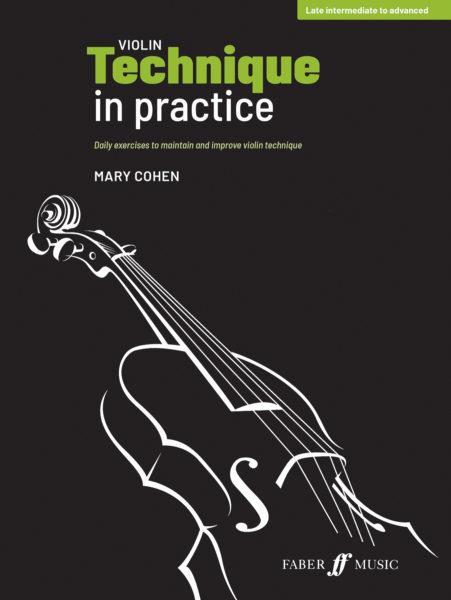Alex Laing reviews an innovative new technique book aimed at all ages

Violin Technique in Practice: Daily exercises to maintain and improve violin technique
Mary Cohen
80PP ISBN 9780571541577
Faber Music £14.99
Mary Cohen has a well-deserved international reputation as a composer of educational music for violin. This book on technique is aimed at violinists of intermediate level and above. It comprises ten progressive sets of exercises and covers many of the skills that any professional violinist will need mastery of in their career. These include left-hand finger accuracy, string-crossings, shifting, double-stopping, awkward fingerings and stretches. Cohen also covers some of the common bow strokes including martelé and spiccato.
Each of the ten sets follow the same pattern. They all start with a ‘golden tone’ exercise which is designed to develop and maintain control of the bow while staying physically and mentally free; then follow exercises on two or more aspects of technique, before the set is finished by a ‘tech-synthesis’, which is a small composition of ‘real music’, combining the skills explored in the set.
There are many good things about this volume. It is laid out very clearly and gives a player or a teacher plenty of space to make notes within the book itself. Each technique is discussed using simple yet non-patronising language. This means that a less advanced learner will easily be able to grasp what is required, a teacher will be able to guide, and a more advanced player will have a study book that does not intimidate. The compositions at the end of each set use the techniques covered, but there is always the feel of music being prioritised rather than virtuosity: the Ländler at the end of Set 7 is nearly Kreisleresque in feel and in its shifting requirements.
At all times Cohen stresses ease of movement, weightless balance of body, violin and bow, and urges the player to keep things as simple as possible while not worrying. It is always refreshing to read instructions like: ‘Stay calm and balanced – and don’t worry about how strange this sounds!’ This kind of approach will be so helpful for players who have allowed themselves to become tight in their approach, or who would like to build a fluid technique free from discomfort.
There are gems of advice not often seen in study books. For instance, Cohen takes great care in describing how the left hand should stretch back safely from the fourth finger, which provides the player with the opportunity to expand the hand much further. I was excited to see that Cohen addresses how to play pizzicato and how to tune 5ths. Her treatments of these, however, were the only places in the volume where I was somewhat disappointed. Given that so many other techniques are described so well, it would have been splendid to have a description of, or advice on, how to stay balanced physically when executing pizzicato, whether or not holding a bow. Tuning 5ths is very hard, as we know. Again, it would have been good to see some ideas on what a player might try if it is not working.
Virtuoso violinists may not need this book, but I would urge any budding performer and all violin teachers to add it to their collection.
ALEX LAING



































No comments yet